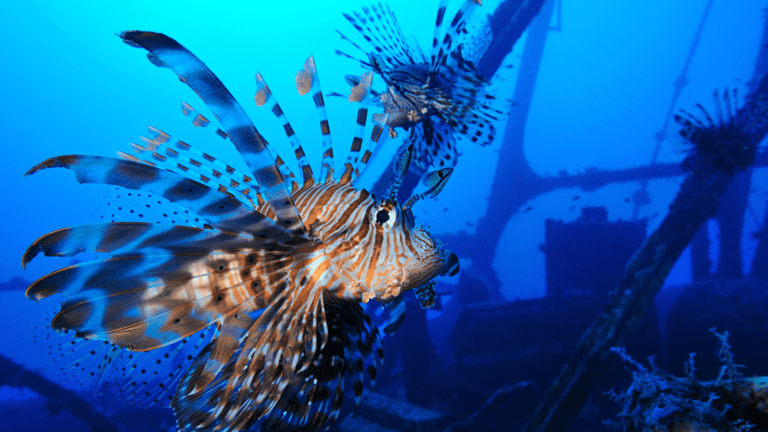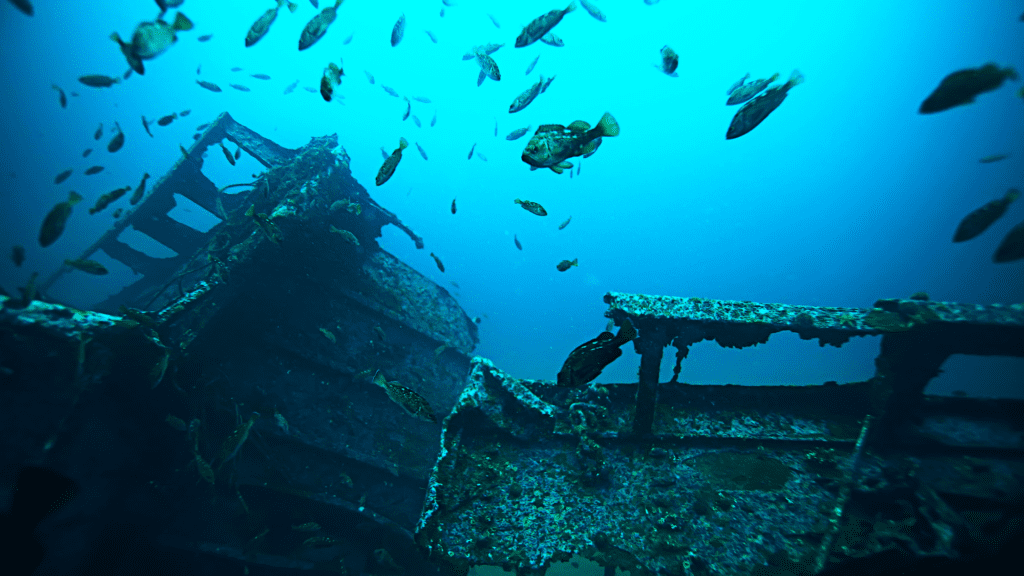Wreck diving is more than just exploring old, sunken ships or forgotten underwater structures. These dive sites become thriving marine ecosystems, home to a unique array of marine species that often prefer the shelter, food sources, and habitat provided by these man-made reefs. The appeal of wreck diving is partly in discovering the hidden corners and history of the wreck itself, but it’s also in observing the remarkable marine life that has made these structures their homes. Here, we’ll explore some of the most fascinating creatures you’re likely to encounter around wreck sites and what makes these environments so inviting for marine biodiversity.
Why Wreck Sites Attract Marine Life
A sunken wreck creates a man-made reef, offering shelter and surface area for marine organisms to settle and thrive. As these structures age, they attract a variety of creatures—from the smallest invertebrates to larger pelagic fish. The sheltered crevices, nooks, and crannies provide prime spots for fish to spawn and for coral to grow. This abundance of marine life can be a magnet for photographers, seasoned divers, and even beginners who want to witness a different side of the underwater world.
1. Colorful Corals and Sponges
Coral and sponges are often the first settlers on wrecks, starting a cycle that attracts other marine life. Hard corals like staghorn and brain coral, along with soft corals and sea fans, attach to the wreck’s surface, creating vibrant underwater gardens. These corals provide food and shelter for many other species, attracting small fish and crustaceans. Sponges also quickly colonize these structures, coming in various shapes, colors, and sizes, and they, too, contribute to the complexity and attractiveness of the wreck’s ecosystem.
2. Schooling Fish
Many wrecks are host to large schools of fish. Species like snapper and jackfish often gather in dense schools around wreck sites, making for an impressive sight. These fish use the structure as protection against larger predators while they feed on plankton and smaller organisms found around the wreck. Watching hundreds of fish move in sync can be mesmerizing for divers, and wrecks provide a perfect setting to witness these natural spectacles.
3. Barracudas and Trevallies
The presence of smaller fish often brings larger predatory fish like barracudas and trevallies to the scene. These fast and agile hunters are attracted by the abundance of prey fish around wrecks. Barracudas, known for their streamlined bodies and piercing eyes, are often seen circling or patrolling the wreck perimeter. They add a sense of thrill to the dive as they lurk, seemingly indifferent to divers but always alert to a potential meal.

4. Groupers and Snappers
Groupers are a common sight around wrecks, often found hiding within the structure’s dark, enclosed spaces. These robust fish grow large and can be very territorial, usually resting in quiet corners of the wreck. Snapper species, on the other hand, may travel in schools and are commonly found around wrecks as they feed on smaller fish and crustaceans. Both groupers and snappers contribute to the diversity of life on wrecks and can be found at various depths, depending on the location of the dive.
5. Octopuses and Cuttlefish
Clever, curious, and highly adaptable, octopuses are often found around wreck sites. They take advantage of the many hiding places available to avoid predators and search for food. Cuttlefish, known for their rapid color-changing abilities, are also frequent visitors. Both species are highly intelligent and are known for their incredible camouflaging skills, making them a favorite for divers to spot and photograph. Observing an octopus navigating the structure or a cuttlefish changing colors as it glides by adds an exciting layer to the wreck diving experience.
6. Moray Eels
Wreck sites provide plenty of cavities and holes that are perfect hiding spots for moray eels. These eels are known for their snake-like appearance and for hiding within crevices, only their heads visible, with mouths open, revealing their sharp teeth. Although they may look intimidating, morays are generally not aggressive unless provoked. Observing them as they quietly wait in their lairs adds a touch of mystery to the wreck’s atmosphere, making them a thrilling find for divers.
7. Sea Turtles
It’s not uncommon to encounter a sea turtle cruising around a wreck, especially in tropical waters. Wrecks provide a good source of food and shelter for these gentle creatures. Green sea turtles and hawksbill turtles are particularly common around wreck sites with plenty of coral and sponges, their primary food sources. Sea turtles are a treat to see on any dive, and the contrast of these ancient animals against the backdrop of a historic wreck creates an unforgettable moment.

8. Nudibranchs and Other Invertebrates
For macro photographers and lovers of small marine creatures, wreck sites can be treasure troves of nudibranchs, flatworms, and shrimp. Nudibranchs, in particular, are tiny, vividly colored sea slugs that feed on sponges and algae, thriving in the nutrient-rich environment that wrecks offer. Other invertebrates like crabs and lobsters also make their homes in wreck crevices, providing food for larger predators and adding to the complex food chain that characterizes these sites.
9. Sharks and Rays
Some wreck sites, especially those located in deeper waters or near natural reefs, attract sharks and rays. White-tip reef sharks, nurse sharks, and occasionally larger species like bull sharks can be spotted near wrecks. Rays, such as stingrays and eagle rays, are also known to glide gracefully around these structures, foraging along the sandy substrate nearby. These larger animals add an extra level of excitement to wreck diving, offering divers the chance to observe them up close in a habitat that feels removed from human influence.
10. Lionfish and Scorpionfish
Lionfish, with their striking appearance and venomous spines, are often found around wrecks in the Caribbean, Southeast Asia, and parts of the Pacific. While they are beautiful, they’re also invasive in some regions, feeding on smaller fish and impacting local ecosystems. Scorpionfish, closely related, are masters of camouflage and can often be found lying in wait on wreck surfaces. These species add to the allure of wreck sites, with their distinctive appearances and fascinating behavior patterns.
Diving Puerto Galera’s Wrecks with Casalay
Known for its variety of wreck sites, each with unique marine life, Puerto Galera offers wreck diving experiences that range from beginner-friendly to advanced dives. Casalay Boutique Villas & Dive Resort offers both luxury accommodation and expert-guided dive excursions. Our team of knowledgeable guides can help you navigate the wrecks safely and find hidden marine life, making your dives both fun and educational.
Final Thoughts
Wreck diving offers a special glimpse into marine ecosystems that thrive on submerged human history. Each wreck site tells a story not only of the vessel itself but of the vibrant marine community that has claimed it as home. By diving these wrecks with awareness and respect for their unique ecosystems, you’ll be able to experience the best of what these historical and ecological sites have to offer.
Author: Zach Yanuario



